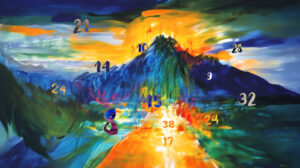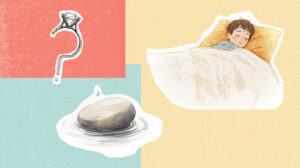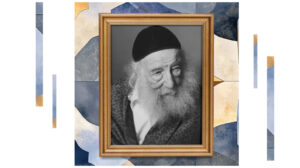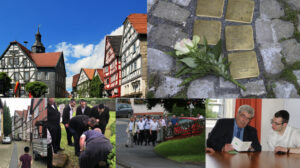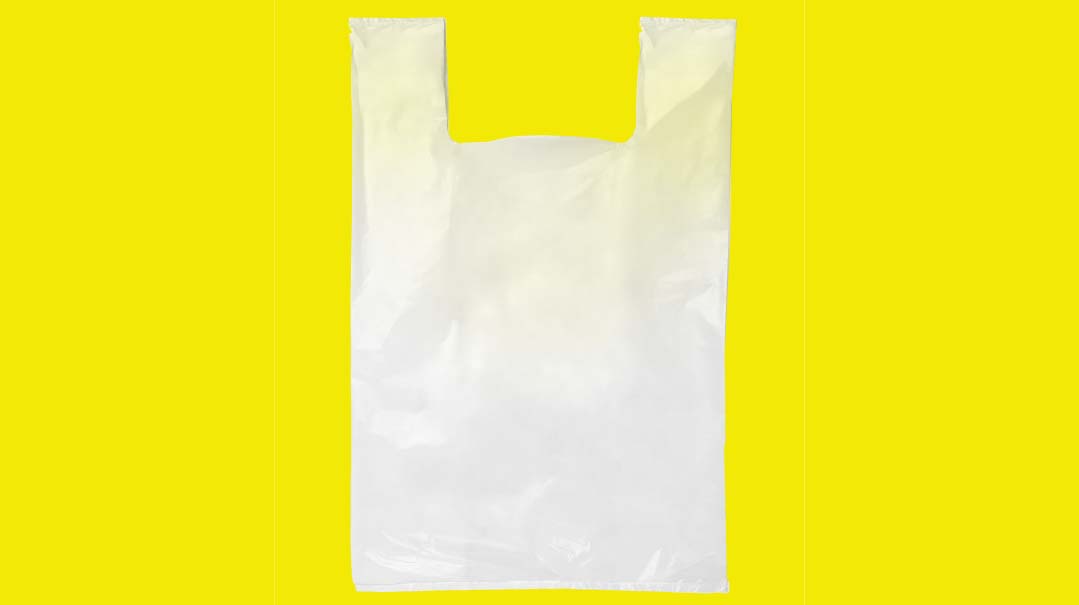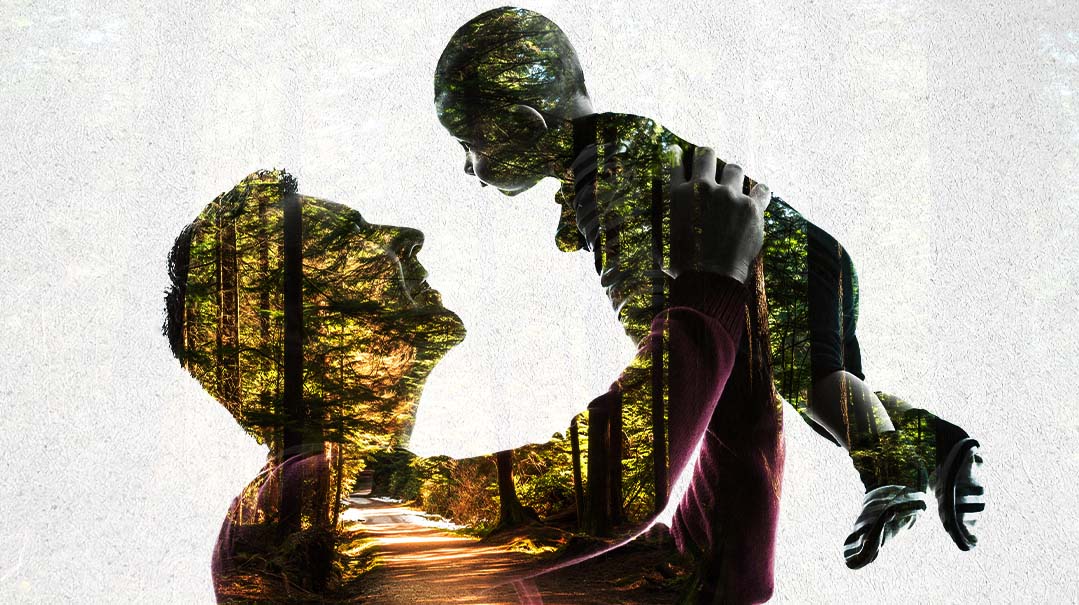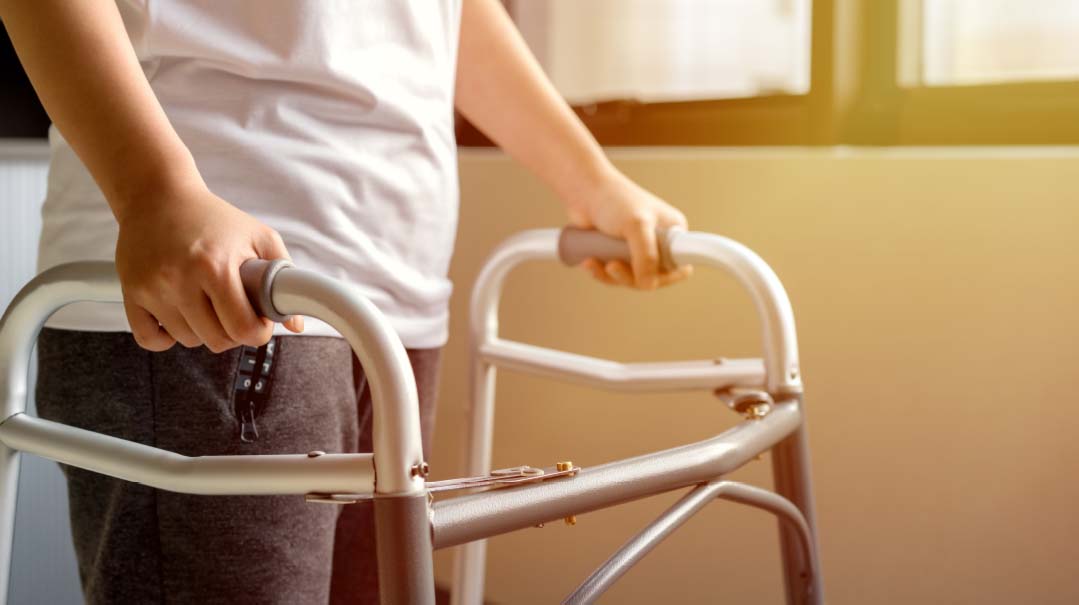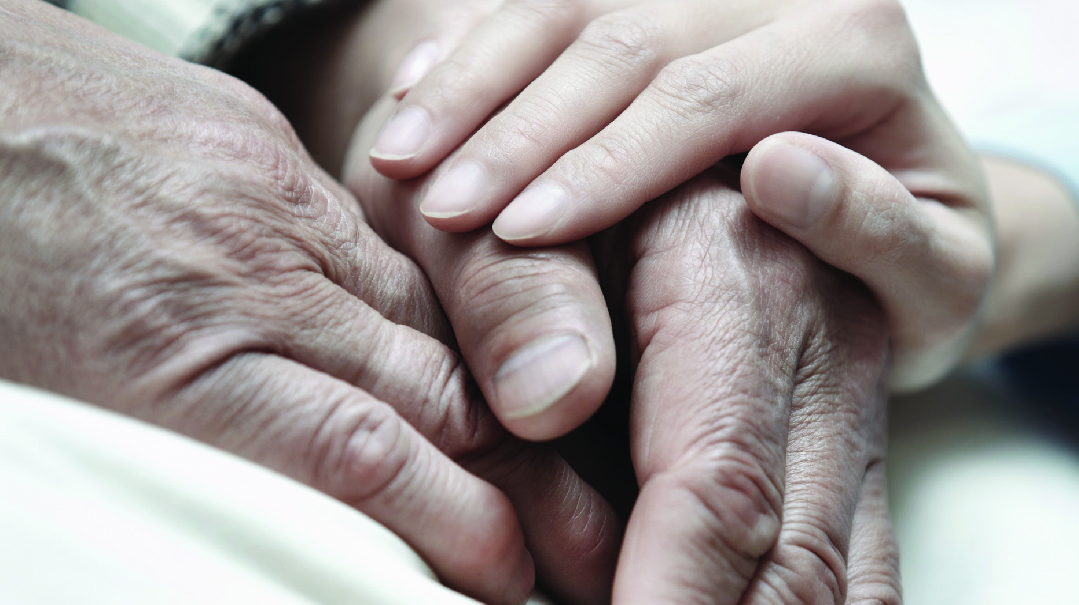Inside-Out Healing


(Images: Shutterstock)
The day I walked into the Barnes & Noble bookstore was one of the most depressing days of my life.
I had just been diagnosed with ankylosing spondylitis (AS) a degenerative disease that causes the bones to gradually fuse together causing severe pain and disability. I was only 25 but already my body had become stiff brittle and wracked with pain and the symptoms I could look forward to as the disease progressed included blindness heart problems and difficulty breathing.
After receiving this devastating diagnosis I had done some of my own research and discovered that some studies had found a correlation between AS and irritable bowel syndrome and that a gluten-free diet could be beneficial for both conditions.
I wasn’t excited about the prospect of eliminating all hamotzi and mezonos from my menu but it was less frightening than the prospect of chronic pain and progressive debilitation.
I headed to Barnes & Noble in search of a book about the gluten-free diet but the particular title I asked for was out of stock. I was about to leave the store when a book called The Divided Mind by Dr. John Sarno caught my eye.
I had heard of Dr. Sarno years earlier when I had attended a session by a distinguished lecturer who disseminates Dr. Sarno’s mind-body approach to healing chronic pain. Back then I had been suffering from foot pain and the pain had disappeared after I tried Dr. Sarno’s approach telling myself repeatedly that the source of the pain I was experiencing was emotional not physical.
Foot pain was child’s play compared to AS. But the book’s index of ailments that Dr. Sarno’s method works for listed “spondylosis” and I assumed that meant AS. So there was hope for me after all.
My parents divorced when I was a kid. Although the family dynamics had been difficult even beforehand the divorce brought with it a whole new slew of problems.
Despite growing up in a broken home I was a basically normal kid. I did well in school I had friends I was happy-go-lucky and inquisitive.
That easygoing nature disappeared however any time I felt threatened or bullied. If someone would start up with me I’d lash out verbally using harsh sharp words to ward off the would-be aggressor.
In high school I decided to take control of my behavior by working on my middos. I began to study mussar seforim intensively by myself and I reached the conclusion that it was forbidden to feel anger or speak negatively about anyone ever.
I also became very serious about my learning. In elementary school I had spent a lot of time playing sports — tennis and hockey were two of my favorite pastimes — but now I felt that it was no longer appropriate for me to waste time on these activities. Only Torah is important I told myself.
I gradually withdrew from my friends as well, secluding myself in my room and learning all types of sefarim. The more I immersed myself in my learning, the more I realized how futile worldly pursuits are, and the more detached I felt from the people around me. I became very guarded in conversations, and did not participate — or participated very half-heartedly — in family gatherings and outings.
The results of my avodas hamiddos really showed, because by the time I was 15, I had conquered my anger completely. (Or so I thought.) Even if someone shamed me publicly, I wouldn’t react; I would just ignore what I was feeling inside.
One day, when I was in 12th grade, I was traveling in the passenger seat of a car, when another car pulled out of nowhere and cut into our lane. A high-speed crash was inevitable and imminent. I sat there, watching this nightmare unfold, and I didn’t even flinch. In the end, by a miracle, the cars missed each other by inches. Everyone else in the car was weak with relief after this near collision, but I remained completely impassive.
This is weird, I remember thinking. I’ve become completely emotionless — a robot. For the first time, it occurred to me that I had shut off my emotions to an unhealthy extent. I was never really happy or sad; I had trained myself to be apathetic. This is not what Yiddishkeit is supposed to be about, I realized.
Acknowledging that my approach had been flawed, I decided to switch to a different yeshivah, a small institution that was known for its warm, geshmak environment. There, I allowed myself to relax and become part of the chevreh. I started to let myself feel again, and the world suddenly became a brighter place.
Life in yeshivah was good but outside yeshivah, I had to play middleman between my parents and smooth out a lot of issues in the family. Another problem was that I started having terrible pain and swelling in my feet. I hadn’t played sports or done any formal exercise in years, so I had no way of explaining what had triggered this attack of pain.
I went to see a doctor, who diagnosed me with flat feet and recommended that I get orthotics. But the orthotics did not help at all. My ankles remained blown up, and I could barely walk. I had to wear sneakers to yeshivah, which was quite embarrassing.
Desperate for relief, I visited numerous specialists and even went to see some alternative practitioners, despite the fact that I was highly skeptical of non-conventional medicine. Yet none of them managed to provide relief. The only thing that took the edge off the pain was taking the highest allowed dosage of ibuprofen. And even so, I was limping.
Knowing that extended use of ibuprofen could damage my liver, I decided at one point to stop taking it for good. For the duration of my yeshivah gedolah years, walking was painful, and I had to steel myself not to return to the pills.
During that time, I began suffering from sciatica and back pain, in addition to the foot pain. I visited another slew of doctors and chiropractors and bought myself a new orthopedic mattress, but every doctor had a different opinion, and again, nothing helped. I was afraid to bend over, lift, or go up stairs. I dreaded going to bed, since I tossed and turned in pain all night. Pain was my constant companion, casting a shadow over every aspect of my life. Managing the pain was turning into a part-time career.
It was my friend Yisroel who suggested that I attend a lecture on healing chronic pain through understanding the mind-body connection. I thought the whole thing was nuts. How could one method help for conditions as diverse as back pain, mono, allergies, chronic-fatigue syndrome, hernias, Crohn’s disease, IBS, and more?
Yisroel claimed that this approach had helped him personally with migraine headaches. “It makes sense that if you are stressed your brain hurts,” I said. “But I have flat feet. Structural problems are not fixed with mind-over-matter rubbish.” But Yisroel kept nagging me to go to the lecture, until finally I capitulated.
To my surprise, the lecture was actually very interesting. The lecturer started off by stating that he was not a doctor, and that if a person feels pain, he should always seek medical advice. That put me at ease from the start, since he wasn’t claiming to be a healer or a guru who was smarter than a doctor and more powerful than G-d. I also learned that Dr. Sarno is not a quack, but rather a back surgeon who came up with his theory after years of seeing patients return with back pain, even after surgery. According to him, chronic physical pain is often the result of repressed anger and subconscious emotional pain, and if a person is able to acknowledge and release these feelings, the physical pain naturally subsides. This has nothing to do with mind over matter — the pain is real, it’s just that the treatment is from the inside, not from the outside.
The basic concept is that the subconscious is trying its best to protect the person from emotional pain by diverting it to physical pain. Once the person decides to acknowledge and talk about their emotional pain as the real source, however, the game is over. There is no more use for the subconscious shtick, and the pain stops. Understanding this is the easy part — the harder part is putting it into action.
For the next few weeks, I repeated to myself dozens of times a day the Sarno mantra: “Physically there’s nothing wrong with me. The physical pain I’m experiencing is a result of my anger and agmas nefesh.”
The method is simple and straightforward — the only catch is that if you don’t fully believe it, it doesn’t work. But I was so excited at the possibility of dropping the doctors and all their copays that I committed myself to the method 100 percent. What did I have to lose by convincing myself that my feet were hurting because of all the painful emotions bottled up inside me?
It wasn’t too difficult for me to admit that there was plenty of repressed rage and hurt lurking beneath the surface. As a child, I had released that rage in ways that were socially inappropriate. As a teenager, I had learned to completely ignore and suppress my feelings. More recently, I had started allowing myself to feel again — and, wonder of wonders, at the same time I had started to experience foot pain, followed by sciatica. Was it far-fetched to speculate that perhaps the negative feelings that were beginning to bubble up again — but were not being consciously recognized or released — were responsible for the inexplicable pain?
The more I thought about it, the more I realized that it made sense that my body was creating all sorts of mysterious ailments as a distraction from emotional pain — which is far more difficult for the body to cope with than physical pain. For the first time in my adult life, I acknowledged that I was harboring tremendous anger toward my parents for breaking up my family. In addition, deep down, I felt responsible for the breakup. Logically, that might not have made sense, but every child of divorce knows that feeling of guilt. On top of that, there were feelings of shame, worthlessness, and resentment.
Incredibly, the more I explored these feelings and allowed them to occupy my consciousness, the less pain I felt in my back, legs, and feet. Over the course of a few months, the pain gradually disappeared.
Goodbye, orthotics. Goodbye, orthopedic mattress. Goodbye, sneakers. For the first time in close to five years, I was pain free.
A couple of years later, after I was married and had my first baby, I began to suffer again. In the midst of the blur of the bris, the crying, and the midnight awakenings, I started to feel excruciating pain in one of my toes. Walking down stairs became an unbearable ordeal; many times I would trip and fall. Sleeping became a torturous experience again. In addition, my entire body seemed off-balance. I could barely turn my head, and bending was out of the question.
When I visited an orthopedist to have my toe checked out, he diagnosed me with a hammertoe, and explained that the condition was treatable either with injections or with a surgically implanted rod — neither of which was a pleasant option.
The other symptoms, the orthopedist could not explain. So I made an appointment with a world-renowned specialist who sent me for blood work and an MRI and recommended that I see a rheumatologist. It was the rheumatologist who diagnosed me with ankylosing spondylitis, and predicted that my bones would gradually fuse together, causing tremendous pain all over my body and various other complications, some of which could potentially be life-threatening.
The treatment plan the rheumatologist offered me basically consisted of alternating between various medications to control the pain and inflammation. I’d be taking the highest allowed dosages of each prescribed medication, but eventually my body would become immune to the effects of the medicine, so I’d have to switch to a different medicine every few months and eventually start the cycle all over again, going back to the original medicine.
Without the medicines, I wasn’t able to sleep or move. With the medicines, I was still uncomfortable, but I was able to function. Even so, I still had trouble walking down the stairs, and I couldn’t turn my neck normally.
I didn’t think of using Dr. Sarno’s approach to alleviate the pain from my hammertoe, because there was no documentation suggesting that the hammertoe could be helped with this method (unlike flat feet and sciatica). I certainly didn’t think of using Dr. Sarno’s approach for AS, which was a serious medical condition. So I continued to suffer.
It was only when I noticed the book The Divided Mind on the shelf at the bookstore and noticed an entry for “spondylosis” (which I mistakenly confused with AS) that it occurred to me that maybe I should try the Sarno approach to healing this condition as well. (Only later did I learn that spondylosis is a different condition — and that even Dr. Sarno himself didn’t claim that this method could heal AS.)
This time, however, the stakes were much higher, and I felt that simply repeating the mantra and acknowledging my negative emotions would not be enough. For the first time in my life, I sat down and made a list of all the sources of stress and agmas nefesh in my life. After that, I spent hours going through all of the hurts of the past and feeling each one deeply. For the first time I could remember, I actually cried over the pain I had suffered growing up.
After that long, intense therapy session with myself, I decided that I was done with all the medication. No more gluten-free diet, I decided. I’m just as healthy as anyone else! This pain will not control my life. From now on, my focus will be on healing myself emotionally.
The very next morning, I woke up with a huge welt under my chin and cheek. I would have been alarmed by this, except that I was already familiar with what Dr. Sarno calls the “symptom imperative,” the idea being that if repressed feelings are not dealt with completely, the physical illness or pain can travel from one place in the body to another. I waited a couple of days and patiently repeated my mantra, and the welt disappeared.
In the process of sorting out my emotions, I realized that having a baby of my own had triggered painful memories of my own childhood. Not only was the experience taking me back to a place of hurt, anger, and guilt, it was also generating fear that I would repeat the mistakes my parents had made and unwittingly cause similar pain to my own children. Had you asked me if I felt anxious, I would have said no, because I was hardly aware that I was feeling that way. But apparently, becoming a father had induced tremendous anxiety somewhere deep inside me. According to Sarno’s theory, those unacknowledged and unreleased feelings were wreaking havoc with my body and were being expressed as physical pain.
By now, I had learned that the basis of this theory could be found in the Torah. Shlomo Hamelech advises us in Koheles, to “remove anger from your heart, and eliminate evil from your flesh,” which means that anger actually harms a person’s body. In Mishlei, the wisest of men says that envy rots the bones. Rabbeinu Yonah comments that if envy has the power to rot bones, which are the hardest, most durable part of the body, then it certainly rots the soft tissue. Clearly, negative emotions are devastating to a person’s body.
Elsewhere in Mishlei, Shlomo Hamelech teaches, “Daagah b’lev ish yashchenah.” There is a machlokes in the Gemara what this means: One opinion holds that when a person has a worry, he should remove it from his mind, while the other opinion holds that he should speak it out to other people. Either way, the worry in a person’s heart has to be acknowledged and released, whether by processing it himself or with others.
The Sarno mantra is a good first step, but for someone like me, it wasn’t enough. In addition to repeating the mantra each time I felt pain, I also began to give myself time at the end of every day to identify and release all the hurts and stresses that had accumulated over the course of the day. I called this my daily “decompression session.” During this session, I would acknowledge that many of the things that were bothering me were out of my control, and I would daven to Hashem for help with them and turn over all my worries and fears to Him.
In the beginning, I felt awkward doing this, but I recognized that it was critical not just for my emotional health, but for my physical health as well.
In the process of this journey, I read one of Rabbi Dr. Abraham J. Twerski’s books, which discusses something called the “sunburn effect.” When a person has a sunburn, the lightest touch can be unbearably painful. Similarly, a small issue or disagreement can often turn into an excruciatingly painful confrontation. The person thinks that this confrontation is what’s causing the pain, when really, the source of the pain goes back to his childhood. A person might be 55 years old, but when someone pushes his buttons, he’s back to his frightened five-year-old self.
The basis of the Sarno approach, I realized, is that an emotional trigger can dredge up a flood of buried pain from the past. Only by recognizing my triggers — “emotional sunburns” — would I be able to take control of my reactions and temper their intensity.
I was diagnosed with AS seven years ago, which was when I augmented the Sarno method with my own emotional healing strategies. Since then, the chronic pain that was once a central part of my life has all but disappeared. Occasionally, I experience a flare-up, which prompts me to go back to using the method.
Far be it from me to scoff at conventional medicine or disparage all the caring doctors who have devoted their lives to healing. I just feel that the field of medicine has not even begun to scratch the surface of the mind-emotion-body connection and recognize that healing often happens inside-out.
(Originally featured in Mishpacha Issue 628)
The narrator can be contacted through LifeLines or the Mishpacha office.
To have your story retold by C. Saphir, e-mail a brief synopsis to lifelines@mishpacha.com or call +1.718.686.9339 extension 87204 and leave a message. Details will be changed to assure confidentiality.
Oops! We could not locate your form.
